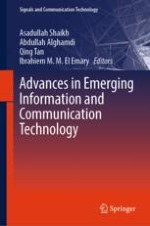2024 | OriginalPaper | Buchkapitel
Coffee Leaf Diseases Quadruple Classifier (CLQC) Model Using Deep Learning
verfasst von : Jameela F. AL-Rashidi, Lena A. AL-Enazi, Rawan F. AL-Mutairi, Shahd Y. AL-Dukhayil, Wiaam A. AL-Abas, Dina M. Ibrahim
Erschienen in: Advances in Emerging Information and Communication Technology
Verlag: Springer Nature Switzerland
Aktivieren Sie unsere intelligente Suche, um passende Fachinhalte oder Patente zu finden.
Wählen Sie Textabschnitte aus um mit Künstlicher Intelligenz passenden Patente zu finden. powered by
Markieren Sie Textabschnitte, um KI-gestützt weitere passende Inhalte zu finden. powered by
